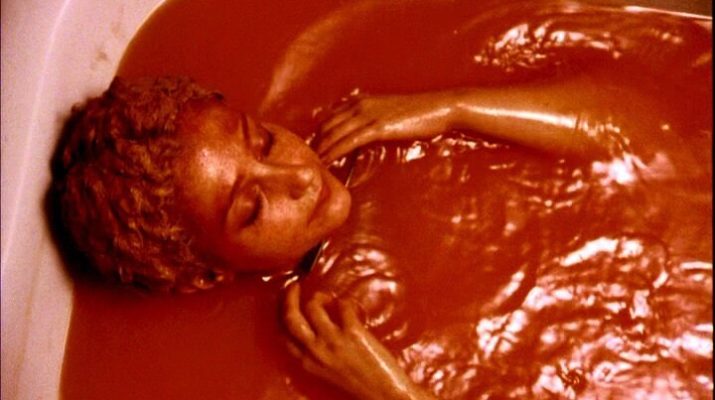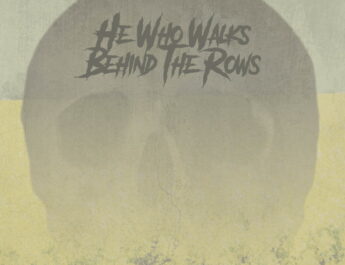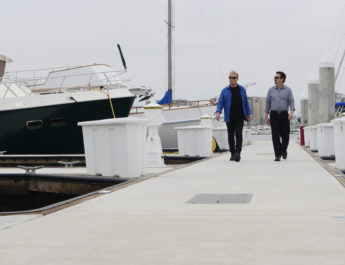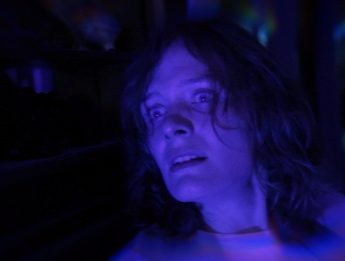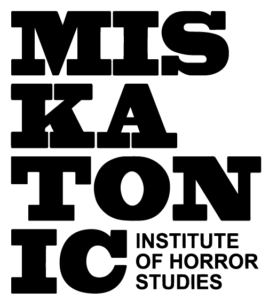
The Miskatonic Institute of Horror Studies, the world’s longest-running educational organization devoted to the study of horror history, theory and production, is pleased to announce its Fall 2019 lineup of classes, led by some of the genre world’s most renowned critical, literary and filmmaking luminaries at all three of our branches.
In addition to Lisa Petrucci’s previously-announced class on exploitation pioneers Roberta Findlay and Doris Wishman, Miskatonic unleashes a heady fall semester that includes bad trips, horticultural horror, Mexican horror, corridors in horror, Satan in film and literature, adaptations and mutations of The Thing, the German Edgar Wallace “Krimi” film, and career talks by filmmakers Karen Arthur, Gary Sherman and multi-media artist Penny Slinger. We’ll even take a nostalgic and critical look at the evolution of the horror fan onscreen, with special guest Dean Cameron, beloved to horror fans for his role as “Chainsaw” in Carl Reiner’s Summer School (1987).
As with our last two Octobers, we’re partnering again with the Brooklyn Horror Film Festival, and we’ve also got our first collaborations with the UCLA Film & Television Archive, Atlas Obscura, Mexico City’s Morbido Festival, our host venue the Philosophical Research Society, and the newly-christened Alamo Drafthouse Cinema LA, the latter for a special screening of Roberta Findlay’s 1985 sleaze-terpiece, TENEMENT.
All classes at our regular branches are stand-alone events (think a TED talk but with booze and horror!) though people can opt to buy a season pass for a discounted price on our website HERE.
FULL CLASS DESCRIPTIONS FOR EACH BRANCH FOLLOW BELOW.
About the Miskatonic Institute of Horror Studies:
Founded by film writer/programmer Kier-La Janisse in 2010, The Miskatonic Institute of Horror Studies is an international organization that offers undergraduate-level history, theory and production-based masterclasses in horror and horror-adjacent topics. We have regular branches in London, New York and Los Angeles as well as presenting special events worldwide.
LOCATIONS:
The Miskatonic Institute of Horror Studies – LA
Venue: The University of Philosophical Research
Address: 3910 Los Feliz Blvd, Los Angeles
Prices: $12 adv / $15 door | Season Pass for 6 classes: $50
The Miskatonic Institute of Horror Studies – NYC
Venue: Film Noir Cinema
Address: 122 Meserole, Greenpoint, Brooklyn
Prices: $12 adv / $15 door | Season Pass for 4 classes: $40
The Miskatonic Institute of Horror Studies – London
Venue: Horse Hospital
Address: Colonnade, Bloomsbury, London
Prices: Reg events: £12 adv / £15 door | In Conversation Events: £17 adv / £20 door | Season Pass for 4 classes: £45
MISKATONIC LA
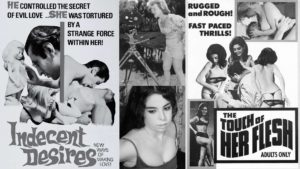
Thursday Aug 8, 7:30pm-10:00pm:
GRAND DAMES OF THE GRINDHOUSE: THE FILMS OF ROBERTA FINDLAY AND DORIS WISHMAN
Instructor: Lisa Petrucci
Something Weird Video’s Lisa Petrucci will lead a lively illustrated lecture on genre film mavericks Roberta Findlay and Doris Wishman, two larger-than-life ladies who were making sexploitation films at a time when it was not common for women to be behind the camera. We will look at their comparable trajectory from nudies and roughies in the 1960s to porn and horror films in the 1970s and 80s, as well as their unique and quirky vision and styles of filmmaking. Both lived in New York City during the mid-1960s, and worked with a lot of the same actresses. They both also used pseudonyms, initially not taking credit for their own films or involvement in making them. The class will begin with a visual overview of each of their careers through a clip and trailers video program, followed by an illustrated lecture about their sleazy and often unsettling subject matter, distinctly unique camerawork and artistic vision, and overall significance to exploitation film history. Doris and Roberta have publicly claimed to not have a feminist agenda (and verge on female misogyny with some of the things they’ve actually said and depicted in some films), but their overall oeuvres often speak otherwise, so we will examine and debate this. The class will conclude with a Q&A session.
Lisa prefers to keep things light so she will try to regale you with fun factoids and anecdotes from her years of being involved with Something Weird Video. There also may be a surprise guest speaker or two. And brace yourselves, all participants will receive a delightfully depraved FREE ARTIFACT – a genuine piece of sexploitation history from the Something Weird Archive that you will cherish for years to come!
This event is in collaboration with the UCLA Film and Television Archive’s series Catch a Thrill! Celebrating Ten Years of the American Genre Film Archive, which runs July 12-Aug 17, 2019.
++++
Tuesday, Aug 13, 9:00pm:
Off-site Screening: TENEMENT
Roberta Findlay, USA 1985
In conjunction with its August 8th class GRAND DAMES OF THE GRINDHOUSE: THE FILMS OF ROBERTA FINDLAY AND DORIS WISHMAN, The Miskatonic Institute of Horror Studies is pleased to present this digital restoration of exploitation film pioneer Roberta Findlay’s action/horror masterpiece, Tenement – preceded by a brief introduction by Miskatonic founder Kier-La Janisse – preceded by a brief introduction by Miskatonic founder Kier-La Janisse – as part of the Alamo Drafthouse Cinema’s signature Terror Tuesday series.
When the working-class residents of a South Bronx apartment building discover a gang of leather-clad junkie thugs squatting in their basement, they get the cops to haul them away – only to ignite an all-out war when the gang is promptly released and wants revenge! The residents soon find their building under siege by the bloodthirsty, drug-addled lunatics, and no one is safe from the brutality as the thugs terrorize, maim and kill the residents, one floor at a time. Their only choice is to fight back, using only their wits, guts and a variety of otherwise benign household implements including weaponized refrigerators, a torrent of pots and pans, and swinging meat cleavers. It’s a classic blowout that paved the way for modern multi-level showdowns like The Raid and Brawl in Cellblock 99.
Please be advised that this film contains mean-spirited violence and sexual assault.
This screening takes place at the new Alamo Drafthouse Cinema in downtown LA. Alamo Drafthouse LA is a state-of-the-art facility featuring twelve auditoriums, each with 4K laser projectors and one with 35mm film projection. Like the brand’s nearly forty other locations across the country, the downtown Los Angeles theater includes a full bar and kitchen, as well as the unique bar and video store Video Vortex, where Blu-Rays and DVDs will be available for free rental.
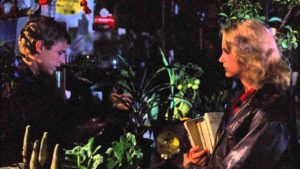
Thursday Sept 12, 7:30pm-10:00pm:
MURDER SEASON: CRIME-SOLVING PLANTS AND OTHER VEGETAL HORRORS
Instructor: Kier-La Janisse
Like the human cadaver, every plant, tree, flower and fungus has a story to tell. But when it comes to how plants tell stories, there are essentially two schools of thought: the scientific and the pseudo-scientific. In the 1970s it was a popular belief – aided by unorthodox experiments, the proliferation of New Age publications and the mass-marketing of Peter Tompkins and Christopher Bird’s 1973 book The Secret Life of Plants – that, despite their lack of a nervous system, plants were sentient and emotional, and could communicate their feelings to humans with the help of electronic devices. Conversely, the scientific community found more practical ways of gleaning what plants had to tell us, through the examination of trace elements at crime scenes in the field of forensic botany.
Expanded from an article commissioned for Nicolas Winding Refn’s website ByNWR.com, Murder Season takes a look at the ways that a disillusioned generation became obsessed with plants, not only in their homes and gardens as part of the burgeoning environmentalist and earth mysteries movements that summoned people back to their rural roots, but in laboratories and recording studios that aimed to document the ways plants experienced and witnessed the world around them and how they could communicate knowledge to us – whether imparting ancient wisdom or fingering a murderer. We’ll look at the influential studies of polygraph expert Cleve Backster and the early 20th century scientists who preceded him, the importation of Kirlian photography from behind the Iron Curtain and its subsequent championing at the UCLA Parapsychology Lab, and the more tangible ways that plants aid in solving crimes, from the trace elements found in poo-prints to the decomposing donors at The Body Farm.
We’ll also look at how vegetal anxiety manifested in horror literature and film, from the writings of Roald Dahl and Philip Jose Farmer to films like Day of the Triffids (1962), The Mutations (1974), The Gardener (1974), The Kirlian Witness (1979) and more.
This class is held in conjunction with several city-wide events celebrating Sacred Bones Records’ re-release of Mort Garson’s classic 1976 electronic concept album, Mother Earth’s Plantasia. Other events in this series include Atlas Obscura’s Plantasia listening party at the UCLA Botanical Gardens on August 10th (https://www.atlasobscura.com/events/plantasia-at-ucla-botanical-garden-aug-2019) and UCLA Film & Television Archive’s screening of The Kirlian Witness (1979) at the The Velaslavasay Panorama Theatre and Gardens on August 25 (https://www.panoramaonview.org/).
++++
Thursday Oct. 10, 7:30pm-10:00pm:
WANTED! MORE VIEWERS LIKE… DEPICTIONS OF HORROR FANDOM IN FILM AND TELEVISION
Instructor: Amy Voorhees Searles, with special Guest Dean Cameron
In the comparatively nascent academic field of fan studies, very little scholarship has been devoted to horror fandom. Yet, for a branch of study invested in an audience’s passionate participation, horror fans have much to offer. Weaned on a steady diet of horror hosted syndicated shockers, EC Comics contraband, and dog-eared copies of Famous Monsters of Filmland, the dedicated “Monster Kids” of the 1950s and 1960s became the vaunted creators for the next generation. Similarly, enterprising “Gorehounds” of the 1980s, inspired by their use-worn pages of Fangoria and liquid latex-flecked copies of Dick Smith’s Do-It-Yourself Monster Make-Up Handbook went on to become the notable effects wizards for the ensuing generation. And the slithering ouroboros that is horror fandom continues to both feed and eat itself into the present day.
As an insular community oftentimes found at the fringe of popular culture, it comes as no surprise that the vast majority of media representation of horror fans is generated by horror fans. However, this is not exclusively the case, which accounts for the spectrum of stereotypes from resilient artist (Tommy Jarvis in Friday The 13th: The Final Chapter), to misunderstood outcast (“Evil” Ed in Fright Night), to amoral puppet (Michael Brower in Brainscan), to desensitized sociopath (Eric Binford in Fade to Black). Happily, there are also numerous examples to explore that defy such preconceptions.
Using fan studies as a springboard, this interdisciplinary lecture will chart the historical events, technological advancements, and cultural anxieties toward media effects that have influenced both the horror fan and the portrayal of the horror fan in film and television over the years.
Dean Cameron, who famously played “Chainsaw” in Carl Reiner’s Summer School – perhaps the most recognizable fictional horror fan for viewers outside of the horror community and beloved by those within it – will be joining us for this discussion of horror fanthropology.
++++
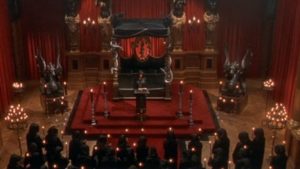
Thursday Oct 24, 7:30pm-10:00pm:
GOD OF THE OUTSIDERS: SATAN IN LITERATURE, CULTURE, AND ENTERTAINMENT—OLD MYTH AND NEW INSIGHT
Instructor: Mitch Horowitz
Co-presented with the Philosophical Research Society, as part of Mitch Horowitz’ Lecturer-in-Residence events
There exists a little-understood counter tradition in Western life that often goes under the easily misconstrued term Satanism. In this intellectually stimulating and probing evening, Mitch Horowitz (“solid gold” – David Lynch) explores the interplay between our primeval understandings of the Dark Side and how Satan is reflected back to us in myth, parable, legend, culture, horror, music, and fashion. Tracing the earliest origins of humanity’s conception of an opposing force in the Eastern and Western worlds, Mitch explores some of history’s most bracing and provocative interpretations of the Satanic—from the work of Milton and the Romantic poets (William Blake’s The Marriage of Heaven and Hell; Lord Byron’s Cain) to more recent fiction and nonfiction literary efforts (Arturo Pérez-Reverte’s The Club Dumas; Anton LaVey’s The Satanic Bible; Michael Aquino’s The Diabolicon), and examines how even some of our most recognized supernatural films (Devil’s Advocate; Rosemary’s Baby; The Ninth Gate) enunciate Satanic themes with penetrating classical validity. In the process, Mitch strips away historical and cultural preconceptions, misunderstandings, and shibboleths to open an entirely fresh window on the intellectual and cultural idea of the Satanic in Western history and contemporary life. He shines a new light into ancient myths, canonical literature, legends, and pop culture to trace out an authentic outsider tradition of Satanic thought. Join us for a challenging and eye-opening evening. You will come away with an entirely new conception of a “familiar devil.”
++++
Thursday Nov 21, 7:30pm-10:00pm:
THE MORBIDO CRYPT’S GUIDE TO MEXICAN FANTASY AND HORROR CINEMA
Instructor: Abraham Castillo Flores
For decades, Mexican fantasy and horror cinema hid in the shadows; wearing a luchador mask, surviving budgets tainted by economic gloom, holding vampires with a nylon thread, receiving the scorn of near-sighted critics and consumption by audiences sunk into tongue in cheek appreciation. But things have changed. Over the past two decades there has been a clear rise in the amount, quality and risk found in Mexican horror and fantasy cinema. It is not by chance that today, in the midst of a horrifying reality, Mexican genre films enjoy popularity, freedom and sometimes, profitability. As if that were not enough, our beloved national genre warrior – Guillermo del Toro – has recently been knighted by Hollywood.
Join us for a scenic tour of Mexican genre cinema guided by Morbido Fest’s head programmer, Abraham Castillo Flores. Delving beyond luchadores and psychotronica, Abraham unearths the monsters that fomented a distinctive but barely acknowledged corner of our cinematic consciousness. We will revisit the origins of Mexican fantasy and horror cinema and examine its development through the 20th Century and the start of the 21st. Along the way we will meet the filmmakers and performers responsible for these celluloid nightmares. Some of these films can be questioned but rest assured, anything they lack is compensated by their sheer honesty and passion. In parallel we will dissect national legends and traumas that have been continuously reinterpreted by our national filmmakers that stand as a reaction to the tragic reality that Mexico is now experiencing.
Who would have thought that stories filled with wailing legends from our pre-Hispanic past, starved female vampires, Aztec mummies, monk ghosts, child practitioners of the dark arts and tropicalized sci-fi Queens, would become part of our cultural heritage?
++++
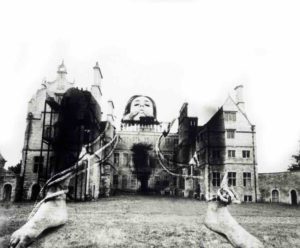
Thursday Dec 12, 7:30pm-10:00pm:
LIVE FROM MISKATONIC: PENNY SLINGER IN CONVERSATION
With special guest Penny Slinger
The Miskatonic Institute is pleased to welcome filmmaker, collage artist, sculptor and performer Penny Slinger to our LA branch for an exclusive, in-depth conversation about her dark surrealist work in multiple mediums.
In 1969 Slinger created her student thesis on the collage art of Max Ernst, which was a combination of written text, film and original collage work. “Having discovered the magic of surrealism,” she later wrote, “I wanted to employ its tools and methods to create a language for the feminine psyche to express itself. The kind of language that dove into the subconscious for images and wantonly combined them into situations and relationships that were both confrontational and expressive.” It was the beginning of an artistic identity that, while always evolving, frequently addressed themes of interior space, body horror, female sexuality and psychosis.
Penny’s work – from with her early student short films and first book of collage art, 50% The Visible Woman to her collaborations with filmmakers Peter Whitehead (Lilford Hall, 1969) and Jane Arden’s Holocaust Theatre troupe (culminating in the feature film The Other Side of the Underneath, 1972), and her masterpiece of psychic trauma, the collage art book An Exorcism (1977) – was the spark for a new mode of surrealism focused on the female experience that would have ripples throughout the film and art worlds, though it would take many years for her pioneering influence to be acknowledged – something that has recently been rectified with Richard Kovitch’s illuminating documentary feature Penny Slinger: Out of the Shadows (2017).
++++
MISKATONIC NYC
Thursday September 19, 7:00pm-9:30pm
GOD OF THE OUTSIDERS: SATAN IN LITERATURE, CULTURE, AND ENTERTAINMENT—OLD MYTH AND NEW INSIGHT
Instructor: Mitch Horowitz
There exists a little-understood counter tradition in Western life that often goes under the easily misconstrued term Satanism. In this intellectually stimulating and probing evening, Mitch Horowitz (“solid gold” – David Lynch) explores the interplay between our primeval understandings of the Dark Side and how Satan is reflected back to us in myth, parable, legend, culture, horror, music, and fashion. Tracing the earliest origins of humanity’s conception of an opposing force in the Eastern and Western worlds, Mitch explores some of history’s most bracing and provocative interpretations of the Satanic—from the work of Milton and the Romantic poets (William Blake’s The Marriage of Heaven and Hell; Lord Byron’s Cain) to more recent fiction and nonfiction literary efforts (Arturo Pérez-Reverte’s The Club Dumas; Anton LaVey’s The Satanic Bible; Michael Aquino’s The Diabolicon), and examines how even some of our most recognized supernatural films (Devil’s Advocate; Rosemary’s Baby; The Ninth Gate) enunciate Satanic themes with penetrating classical validity. In the process, Mitch strips away historical and cultural preconceptions, misunderstandings, and shibboleths to open an entirely fresh window on the intellectual and cultural idea of the Satanic in Western history and contemporary life. He shines a new light into ancient myths, canonical literature, legends, and pop culture to trace out an authentic outsider tradition of Satanic thought. Join us for a challenging and eye-opening evening. You will come away with an entirely new conception of a “familiar devil.”
++++
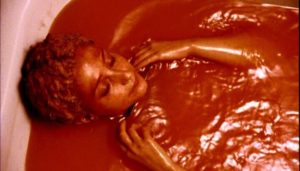
Saturday October 19, Time TBA
LIVE FROM MISKATONIC: KAREN ARTHUR IN CONVERSATION
Moderator: Rémy Bennett with special guest Karen Arthur
In collaboration with the Brooklyn Horror Film Festival, Miskatonic is proud to present a conversation with the pioneering director and producer Karen Arthur who paved the way for women in genre filmmaking with her transgressive and socially challenging body of work.
Arthur began her professional artistic career at the age of 15 dancing as a soloist with the Palm Beach Ballet company which took her to London, New York, and Los Angeles where she performed as an actor on Broadway and in a slew of films in Hollywood. Her time in Hollywood in the 1970s marked a turning point in her trajectory as an artist when she enlisted in a UCLA filmmaking course where she was encouraged by then-teaching assistant Penelope Spheeris (The Decline of Western Civilization, Suburbia, Wayne’s World).
Arthur’s 1975 directorial feature film debut Legacy, adapted from Joan Hotchkis’ one-woman play deconstructing the unraveling neurotic psyche of an affluent middle aged woman trapped in a loveless marriage, was a landmark entry in the feminist filmmaking canon in its unflinching depiction of the interior life of its protagonist viewed though a female lens. Legacy set the stage for Arthur’s next film, the darkly bizarre tale of sisterly psychosis The Mafu Cage (1977), starring Carol Kane and Lee Grant as the siblings Sissy and Ellen who inhabit a fantastically bizarre world of their own making complete with caged primates brutalized by the mentally unstable Sissy. The Mafu Cage is an exercise in exploding taboos, with themes of incest, bestiality, murder and colonialism tackled with such extreme eccentricity that, although celebrated on the art house film festival circuit, the film was doomed to be buried in obscurity and marketed as lowbrow exploitation prior to becoming the cult psychological horror classic that it is recognized as today.
Arthur’s next film project titled Lady Beware about a young woman plagued by a dangerously fixated stalker (which would eventually be made into a feature in 1987 with Diane Lane) was stuck in development purgatory, leading her to turn to television directing for work. In the heavily male-dominated world of TV in the late 1970s Arthur would become the first woman to work in episodic television, directing the show Rich Man, Poor Man for Universal Studios, making her the first woman to direct for the iconic studio since Ida Lupino’s Playhouse Series in the early 1950s. In 1983 she would direct the successful three-part Australian miniseries Return To Eden about an heiress who is the victim of foul play involving a crocodile attack, and in 1985 she would become the first woman in history to win a directing Emmy award for her work in the hit drama television series Cagney & Lacey.
Arthur’s prolific output in directing made-for-television movies began with Victims for Victims: The Theresa Saldana Story (1984) starring actress Theresa Saldana (of Raging Bull fame) as herself in the harrowing true story of the brutal near fatal stabbing attack she suffered at the hands of an obsessed fan. Arthur’s other notable made-for-television movies include the controversial story of the rape of a male police detective The Rape of Richard Beck (1985), Evil in Clear Water (1988) starring Randy Quaid, Fall From Grace (1990) – the biographical story of televangelists Jim and Tammy Bakker, played by Kevin Spacey and Bernadette Peters – and Against Their Will (1994), a drama of corruption in a women’s prison starring Judith Light.
Arthur’s early film work challenged the codes that dominated the lexicon of American cinema and defined the “woman’s picture”; a sexist classification assigned to movies concerning the lives of women, which were often relegated to the domestic, sappily romantic, or melodramatic. Arthur’s genre-defying work was both psychologically complex and artfully subversive, pushing the boundaries of cinema with a human rawness rarely seen at the time from a female auteur, redefining perceptions of what types of movies women were interested in making and consuming. When Legacy was released in 1975, Molly Haskell in her Village Voice review called it “a high-water mark in the exploration of women’s sexuality,” and Ed Pechulick of Film International wrote that the film “rivals the esteemed works of Bergman and Cassavetes.” Such accolades eventually helped persuade reticent male producers to give Arthur a shot in the world of professional television directing, where she continued to explore themes of female sexuality, violence and destructive male aggression towards women within the narrative trappings of the TV movie genre.
In this talk we will discuss the formative experiences that shaped Arthur’s journey in becoming a filmmaker, her artistic process in the creation of Legacy and The Mafu Cage, the inner workings and personal reflections on breaking the glass ceiling in the male dominated industry of television, and her films in the 1980s that deal with the complexities of sexual assault and toxic masculinity within a culture of often dangerous male supremacy.
++++
Thursday November 21, 7:00pm-9:30pm
DESTRUCTIBLE MAN: THE DUMMY-DEATH AND CINEMATIC STORYTELLING LANGUAGE
Instructor: Howard S. Berger
Prosthetic demise, or the “dummy death” as film historians Howard S. Berger and Kevin Marr refer to it, is a practical cinematic technique wherein an actor portraying a character is replaced by an articulated replica special-effects mannequin at a moment of extreme violence and/or death within a given film’s narrative. This device has been employed by filmmakers all over the world, at every level of production and in every genre since the dawn of the cinematic medium. When viewed in isolation, the dummy death effect can be characterized as the cinematic illusion in microcosm. The class will be illustrated by clips from such dummy-death emboldened films like Strait-Jacket, Scanners, Dracula Vs Frankenstein, The Birds, 2001 and The Fury, and films by directors as disparate as Alfred Hitchcock and William Castle, Francois Truffaut and Al Adamson, Quentin Tarantino and Edwin S. Porter, Steven Spielberg and Shohei Imamura, within the same cinematic, storytelling continuum.
About the Instructor:
Howard S. Berger is a screenwriter, editor, director, documentarian, historian and educator on all things cinema. He’s half creator (alongside Kevin Marr) of the “Destructible Man” blog – where individual films with dummy-deaths undergo close examination and deconstruction. Howard has also contributed to dozens of audio commentaries for Kino Lorber, Image, Synapse, Arrow and 101 Films as well as many interviews and articles to such magazines as Fangoria and European Trash Cinema. He was co-director of the cult feature, Original Sins and the documentary A Life in the Death of Joe Meek. Destructible Man is currently being prepared as a feature documentary and video essay series.
++++
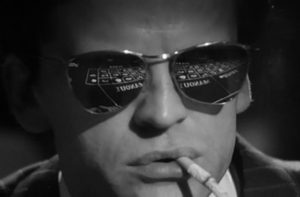
Thursday December 19, 7:00pm-9:30pm
THE DEAD EYES OF LONDON: HORROR AND CRIME IN THE GERMAN “KRIMI” FILM
Instructor: Samm Deighan
This class will explore the German krimi film, or Kriminalfilm, a genre of West German crime thrillers inspired by the novels of British mystery writer and King Kong creator Edgar Wallace. Began in the late ‘50s with Der Frosch mit der Mask (The Fellowship of the Frog, 1959), made in partnership between Danish production company Rialto Films and West German distributor Constantin Film, krimi films somewhat made up for the lack of a robust postwar national horror cinema in Germany. Though the krimi are not strictly horror films, they feature a madcap blend of genres: horror, crime, mystery, and police procedural, with elements of fantasy and science fiction, resulting in an often surreal mashup of genre tropes.
The popularity of these films led to dozens being produced throughout the ‘60s, with 32 films in the official Rialto series and more spin offs from other production companies. In general, these films follow a simple format inspired by the crime serial of silent filmmakers like Louis Feuillade: a detective, generally from Scotland Yard, is hot on the trail of a criminal mastermind and must wade through an outlandish sea of potential suspects. Often, the antagonists are masked or costumed members of a criminal conspiracy whose motivations are sex, drugs, blackmail, or cold hard cash; sometimes the krimi plots take on a more gothic cast and feature revenge, dark family secrets, and madness. Red herrings and fake identities abound, and many of these films borrow from literary “locked room” mysteries, where the crime committed seems physically impossible, or follow a similar format as future slasher films, where characters in a fixed location are killed off one by one.
With their lurid violence and macabre humor, and shadowy, fog-drenched sets in an imaginary London or in spooky castles replete with secret passageways, the Kriminalfilm is an important but relatively unexplored subgenre. Perhaps this neglect is due to the death of home video releases for English language audiences, but the krimi represent a vital stepping-stone: they are effectively the bridge between German Expressionism and film noir, and later horror subgenres like the Italian giallo film and Eurohorror of the ‘70s. This class will explore the importance of the krimi as a stepping-stone, while also examining the evolution of the series and its relationship to and influence on the horror genre. Though they retained common themes and shared stock characters—often embodied by beloved cult actors like Christopher Lee and Klaus Kinski—krimi plots would become increasingly lurid and pulpy as the series wound to a close in the late ‘60s and early ‘70s, directly influencing the Eurohorror of the ‘70s.
++++
MISKATONIC LONDON
Thursday September 12, 7:00pm-10:00pm
THE BAD TRIP: PSYCHEDELIC HORROR CINEMA, 1967-1972
Instructor: James Riley
In March 1966 Life magazine published ‘The Exploding Threat of the Mind Drug that Got Out of Control’, an article that covered the growing popularity of LSD use in America. Staff writer Gerald Moore was largely even-handed in his account, reporting that LSD could provide the user with ‘beatific serenity and shimmering insight’. However, he struck a darker, more cautionary tone when he described the case of an unnamed ‘teen-age girl’ who attended a Hollywood ‘acid party’. According to Moore, she took LSD and then suffered a bad trip: ‘a sudden vision of horror or death which often grips LSD users when they take it without proper mental preparation.’
Within psychedelic culture the threat of the bad trip hovers like an ominous presence. Psychedelic or ‘Mind-clearing’ drugs may promise wisdom, visionary insight or a fabulous holiday for the brain, but they can also release the horrors of the id, tear the veil of sanity and pull you into the void.
As psychedelic culture took root into the public imagination, film-makers of the mid to late 1960s, drew heavily on its visual language. From the art-house to the drive in; Conrad Rooks’ Chappaqua (1966) to Ed Mann’s Hallucination Generation (1966), cinema variously made use of and attempted to imitate the sensory intensity of the stereotypical acid trip: polychromatic colours, spatial-temporal distortion and strange, surreal encounters. However, as this class will explore by way of an illustrated talk, it was the horror cinema of the period that made the most productive and imaginative use of psychedelic imagery. Films like Michael Reeves’ The Sorcerers (1967), Vernon Sewell’s Curse of the Crimson Altar (1968) and Daniel Haller’s The Dunwich Horror (1970) vividly rendered ‘sudden vision (s) of horror or death’ in scenes that carried a distinctly acid-tinged ambience. These cinematic bad trips are gateways to inner space and terrifying psychic landscapes. Along with other examples by directors including José Mojica Marins, Ray Danton and ‘J.X. Williams’, they signify a preoccupation with a horror of the mind, not of the body.
With reference to writers including Aldous Huxley and Timothy Leary this class will chart the emergence of psychedelia across the Sixties and will examine the incorporation of its visual language in horror cinema during the period 1966-1972. Rather than seeing the films in question as acts of exploitation, the talk will frame them as radical works of acid horror, a from which in the case of The Dunwich Horror is used to conjure the cosmic vertigo integral to H. P. Lovecraft’s writing. Further, the talk will also read back from the films to the wider drug culture to uncover a sense of horror underpinning the psychedelic experience as a whole.
++++
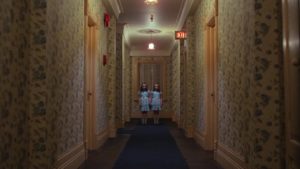
Thursday October 24, 7:00pm-10:00pm
CORRIDOR GOTHIC
Instructor: Roger Luckhurst
This class investigates the role of the corridor in Gothic fiction and horror film from the late 18th century to the present day. It seeks to establish this transitional place as a crucial locus, by tracing the rise of the corridor as a distinct mode of architectural distribution in domestic and public buildings since the 18th century. The lecture tracks pivotal appearances of the corridor in fiction and film, and argues that it has become associated with a specific emotional tenor, less to do with amplified fear and horror and more to do with emotions of Angst or dread.
This talk will explore how the corridor has become a modern place of unease and dread, from the hotel hallway of H. P. Lovecraft’s ‘The Shadow over Innsmouth’ via Kafka’s labyrinthine passages in ’The Trial’ to the contemporary horror film obsession with corridors, as evidenced in ’Stranger Things’ or Jordan Peele’s ‘Us’. The talk will give a history of the origins of the corridor and its often utopian associations in the 18th and early 19th century, before it became associated with faceless institutions, bureaucracies and the mid-20th century office. By the end of class, Miskatonic students should be able to assess whether we have passed from a corridic to a profoundly anti-corridic era.
++++
Monday November 18, 7:00pm-10:00pm
LIVE FROM MISKATONIC: GARY SHERMAN IN CONVERSATION
Moderator: Sean Hogan with special guest Gary Sherman
Note: This class is on a Monday night, to accommodate Gary’s schedule in the UK
In association with the Abertoir Film Festival, Miskatonic is proud to present an evening in conversation with renowned genre director Gary Sherman, bringing him back to where it all began – Russell Square.
After cutting his teeth in advertising, Sherman’s ferocious debut Death Line (1972) announced the arrival of a major new directorial talent. Predating the higher profile The Texas Chainsaw Massacre (1974) and The Hills Have Eyes (1977) with its blend of visceral cannibal horror and social satire, Death Line is a major contribution to the new wave of 1970’s horror that has perhaps only recently started to receive the acclaim it deserves. He followed this with other such notable works as the darkly atmospheric Dead & Buried (1981), the gritty sleazefest Vice Squad (1982), old school 80’s actioner Wanted: Dead or Alive (1987), and the troubled production that was Poltergeist III (1988).
Sherman’s work is notable for its visual inventiveness and political subtext, often displaying a keen affinity for the plight of the marginalised and oppressed. While many of his films were met with relative critical indifference upon their initial release, several have been warmly reappraised in recent years. Guillermo del Toro has consistently championed Death Line over the course of his career, calling it ‘one of the unsung masterpieces of the genre’, and the film’s recent restoration and blu-ray release earned it a whole new generation of admirers. Forthcoming restorations of Dead & Buried and Vice Squad seem set to do the same, and so Miskatonic is delighted to offer its audience this rare UK opportunity to hear the cult auteur discuss his work in depth.
We’ll talk to Sherman about working with genre greats Donald Pleasence and Christopher Lee, how it was an American expat nailed the thoroughly English class satire of Death Line, his struggles to maintain his voice and personality in the face of Hollywood interference, the trials and tribulations of Poltergeist III, his ‘lost’ film 39: A Film by Carroll McKane (2006) and why he considers it too disturbing to release, and much more besides.
++++
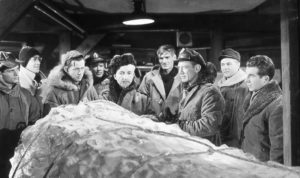
Thursday December 12, 7:00pm-10:00pm
THINGS FROM OTHER WORLDS: ADAPTING, TRANSFORMING AND TRANSLATING THE THING
Instructor: Laura Mee
This lecture explores the rich narrative universe of The Thing, using its various iterations to examine the multi-platform and serial nature of contemporary genre storytelling. While John Carpenter’s 1982 film remains the best-known (and most widely celebrated) version, the tale of the eponymous alien ‘thing’ which invades and imitates its host body has its origins in a 1938 novella (John W. Campbell, Jr.), which was adapted in two other films (Christian Nyby, 1951; Matthijs van Heijningen Jr, 2011). The Thing’s world has been further expanded or altered through comic books, video games, fan fiction and fan-made videos, novelisation, theme park attractions, and ancillary merchandising. These numerous story extensions, spin-offs and retellings contribute to a broad narrative which spans decades in terms of production and centuries in its fiction, frequently crossing or confusing boundaries of space, time, and occasionally genre (for example, from science fiction to Carpenter’s film as an example of 1980s’ body horror).
Transmedia storytelling allows for the creation and consumption of an entire narrative universe across various formats, with each text contributing to and enriching its universal whole. Simultaneously, individual entries into these wider story worlds are self-contained, allowing for their enjoyment as a singular text (Jenkins 2008: 97-98). However, transmediality can confuse categorisations of cinematic ‘multiplicities’ (sequel, prequel, remake, etc.) and the definition of one text solely by its connection to another. In the case of The Thing 2011, for example, which purports to be a prequel to John Carpenter’s film, it can be seen in many ways to more closely resemble a remake. Despite narrative and visual details which anticipate the events of Carpenter’s film, placing it in a clear position of ‘beforeness’, much of it plays out as a recreation of the 1982 film. Within a wider culture of adapting and recycling in genre cinema, remakes—like sequels, prequels, reboots or spin-offs—are becoming increasingly difficult to exhaustively define, and to clearly distinguish from many other forms of filmic adaptation – including prequels and sequels.
In a way reminiscent of the alien subject at its heart, which copies, transforms and mutates as its virus spreads, The Thing illustrates the way in which intricate and complex ‘worldbuilding’ can occur through the introduction of new narrative instalments across multiple media platforms. But it also highlights the impossibility of exhaustively defining categories of adaptation and serialisation. Ultimately, this lecture does not strive to resolve these complexities, but rather to identify the theoretical considerations raised by transmedia genre storytelling within a wider culture of recycling and adaptation.

